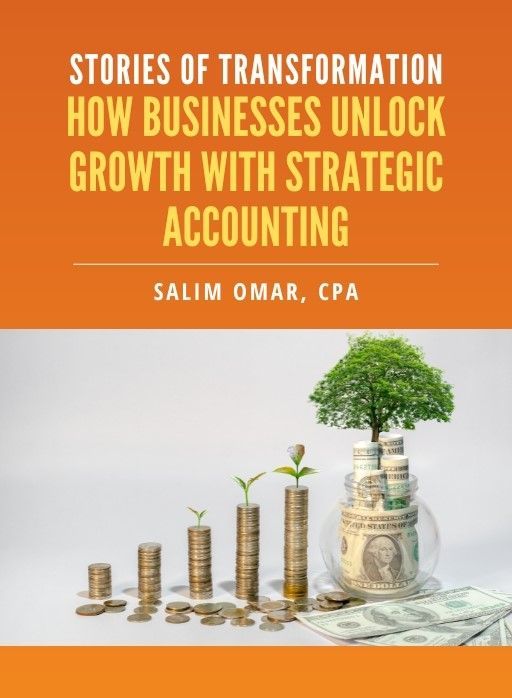Outsourced vs. Fractional vs. In-House: A Practical Q4 Decision Framework
Q4 compresses priorities: close cleanly, prep for audits and taxes, and translate this year’s performance into next year’s roadmap. The decision is simple in theory—outsource, go fractional, or build in-house—but context matters. Select the model based on today’s bottlenecks, cost tolerance, and the operating model needed on January 1.
What the Three Models Really Mean
- Outsourced finance: External teams execute defined functions (AP/AR, reconciliations, close, compliance, and tax), with costs tied to scope and volume. Expect scalability and speed-to-output.
- Fractional finance (CFO/Controller): Senior leaders engaged part-time to sharpen strategy, improve decision quality, and level up reporting without full-time overhead.
- In-house team:
Full-time employees embedded in systems and culture who provide continuity, control, and institutional knowledge.
When To Choose Outsourced
Outsourced execution shines during volume spikes or backlog cleanup, where process reliability is more important than proximity. In Q4, that often means catching up AP/AR, accelerating month- and quarter-end close, and tightening audit and tax readiness to reduce the risk of post-close surprises.
Variable, scope-based pricing helps manage cash while addressing short bursts of demand. Trade-offs include less cultural embeddedness and reliance on vendor SLAs and tools.
When To Choose Fractional Leadership
Fractional CFOs/controllers create leverage when Q4 decisions shape next year—through board‑ready insights, forecast integrity, capital‑structure optimization, and diligence on growth initiatives.
This model lifts decision quality and narrative without committing to a permanent executive. It is ideal for upgrading dashboards, stress-testing runway and debt covenants, or shaping 2026 plans with scenario analysis. The constraint is capacity—fractional leaders don’t absorb day-to-day workload, so pair with internal or outsourced execution.
When To Lean In-House
In‑house teams bring control, cross-functional coordination, and embedded context—critical in budget cycles, stakeholder alignment, and multi‑department approvals.
When Q4 requires intensive collaboration—budget hearings, compensation planning, and capex gates—an internal team accelerates decisions and cuts handoffs. Limits: hiring is slow, onboarding drags, and fixed payroll persists after seasonal peaks. Consider in-house when finance is a strategic core competency, and year-round demand justifies the fixed cost.
A Practical Q4 Framework
Start with three questions to match the model to the moment. In most Q4 scenarios, get the books running smoothly first, so decisions move faster.
What’s the immediate pressure?
- Clean close, compliant, and tax‑ready: outsource processing to speed the close and reduce errors.
- Board narrative, forecasts, and capital decisions: add fractional leadership after reporting is consistent.
- Cross-functional budgeting and approvals: keep in-house to align teams, using outsourced reporting so everyone works from the same numbers.
What’s the cost tolerance?
- Outsourced: variable, scope-based; quick to scale up or down with seasonality.
- Fractional: higher hourly, lower commitment than a full-time executive; best when the transaction layer is already clean.
- In-house: fixed salaries plus tooling and onboarding; stronger ROI when paired with outsourced support during peaks.
What future state is being built?
- Temporary Q4 lift: outsource to clear backlogs and lock in reliable closes.
- Transitional leadership: fractional to professionalize reporting and steer capital choices—most effective with standardized outsourced reporting underneath.
- Durable capacity and IP: in-house to build long-term advantage, with outsourced process support to maintain pace during hiring and ramp.
The Effective Hybrid
Most teams combine models to balance the speed, expertise, and ownership. A practical sequence is to outsource transactions to establish consistent reporting, bring in a fractional CFO to shape the board story and refine forecasts, and keep a lean in-house nucleus to coordinate budgets, approvals, and institutional knowledge. This reduces Q4 execution risk, avoids over-hiring for seasonal spikes, and preserves flexibility as January begins.
Implementation Guardrails For Q4
- Define outcomes before resourcing: “Day-10 close,” “unqualified audit,” “board-ready long-range plan,” “cash runway signed off.” Then staff to the outcome, not the org chart.
- Instrument the handoffs: RACI for close, clear data ownership, and a shared cadence for weekly Q4 war rooms; vendor SLAs tied to close calendar dates.
- Preserve knowledge: document reconciliations, key assumptions, and model logic so insights survive December handoffs into January execution.
- Plan the January pivot: if fractional was used to get through Q4, schedule a post-close transition to operationalize dashboards and transfer playbooks to in-house or ongoing outsourced support.
Decision shortcuts
- If the books are behind or the audit file is noisy, prioritize outsourced processing first; strategic clarity rests on clean data.
- If the board pack lacks a clear narrative or the forecast feels shaky, engage fractional leadership to sharpen the story and steady decisions quickly.
- If budgeting stalls due to cross-functional friction, appoint an in-house owner to align stakeholders and timelines.
The Takeaway
Q4 is too compressed for mismatched finance capacity. Outsourced companies handle volume at variable cost, fractional leaders sharpen strategy, and in-house staff anchor control and continuity. Choose the model—or hybrid—that matches today’s pressures, cost envelope, and January operating state, so the year closes clean and the next begins with momentum.
Free eBook:
Stories of Transformation


Salim is a straight-talking CPA with 30+ years of entrepreneurial and accounting experience. His professional background includes experience as a former Chief Financial Officer and, for the last twenty-five years, as a serial 7-Figure entrepreneur.





